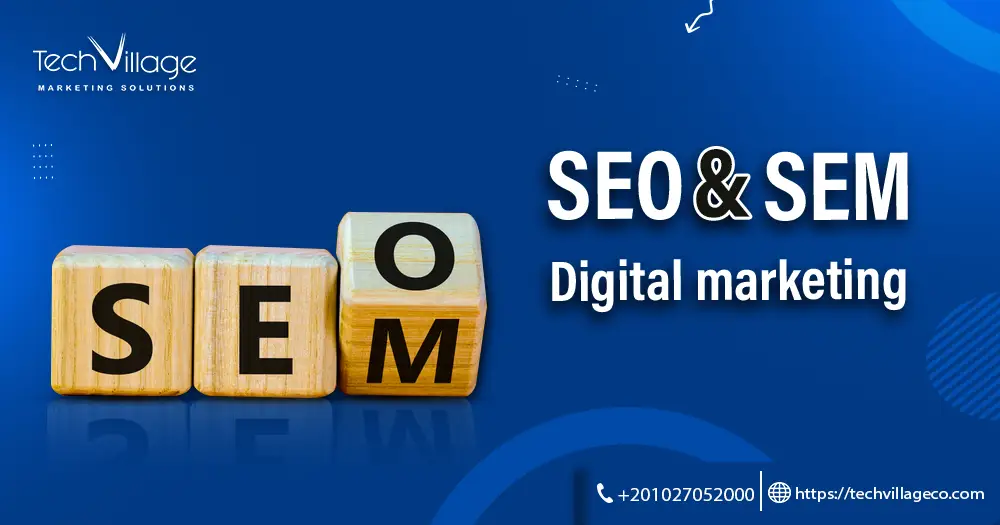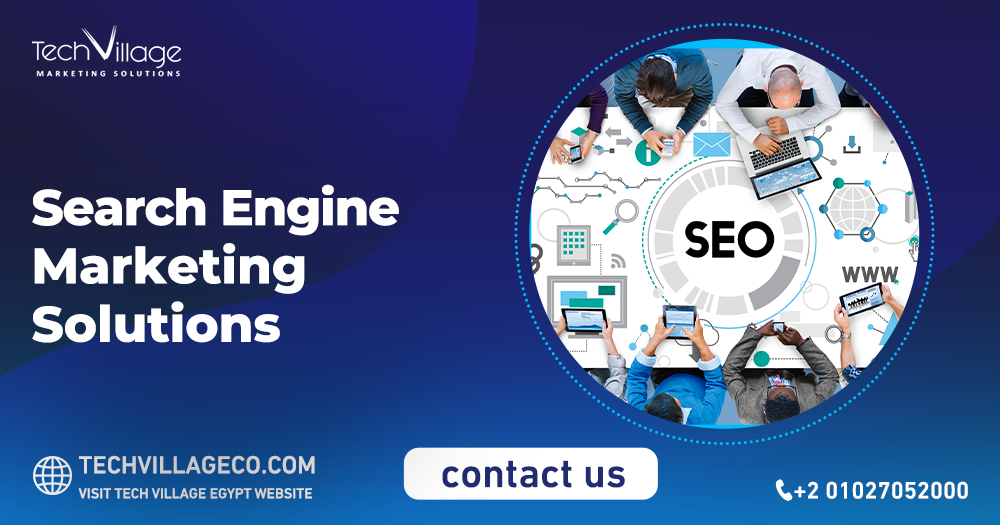In the ever-evolving landscape of digital marketing, achieving visibility and prominence in the vast realm of the internet is a paramount objective for businesses and organizations. Two crucial strategies that play pivotal roles in this pursuit are seo and sem in digital marketing.
These twin pillars of digital marketing serve as powerful tools to enhance online visibility, attract target audiences, and drive valuable traffic to websites.
While both seo and sem in digital marketing share the common goal of improving a website’s performance in search engine results, they employ distinct approaches and tactics. In this exploration, we will delve into the realms of seo and sem in digital marketing.
Table of Contents
ToggleWhat is SEO and how does it work?
SEO is an abbreviation for search engine optimization, as this term means making improvements and modifications to your site such as page loading speed, distribution of keywords in the content, and the way images are displayed in a way that attracts the audience, but in the end, seo and sem in digital marketing are two important factors found for any site.
What is SEM and how does it work?
After speaking of seo and sem in digital marketing. SEM stands for Search Engine Marketing, which is a digital marketing strategy aimed at increasing a website’s visibility in search engine results pages (SERPs) through paid advertising. Here’s how SEM works:
- Ad Campaign Creation: Advertisers create text, display, or video ads that are relevant to the chosen keywords. These ads are typically created through platforms like Google Ads or Bing Ads.
- Bid Management: Advertisers set bids for each keyword, indicating how much they are willing to pay when someone clicks on their ad.
- Ad Auction: When someone enters a search query, search engines run an ad auction to determine which ads will be displayed. The auction considers factors like bid amount, ad relevance, and the quality of the landing page.
- Ad Placement: Based on the results of the ad auction, ads are placed in the search results. Typically, there are both paid results (ads) and organic results (non-paid) on the search engine results page.
- Clicks and Cost: Advertisers are charged when someone clicks on their ad (Pay-Per-Click or PPC). The cost per click (CPC) can vary based on competition and bid amounts.
- Monitoring and Optimization: SEM campaigns require constant monitoring and optimization. Advertisers track metrics like click-through rate (CTR), conversion rate, and return on investment (ROI). They adjust bids, ad copy, and targeting to improve performance.
- Landing Page Experience: The quality and relevance of the landing page to the ad also impact ad performance. A well-designed, user-friendly landing page can lead to higher conversion rates.
Read also: Search Engine Optimization Marketing Services.
The difference between SEO and SEM in digital marketing
seo and sem in digital marketing are both strategies to improve a website’s visibility in search engine results, but they differ in several key ways:
1-Nature of Traffic:
- SEO: Focuses on organic, non-paid search results. It aims to improve a website’s ranking in the standard search results by optimizing various on-page and off-page factors.
- SEM: Involves paid advertising. It aims to increase a website’s visibility by placing paid ads in the sponsored section of search engine results.
2-Cost:
- SEO: Generally, it’s a long-term strategy with no direct cost per click (CPC). However, there are costs associated with SEO efforts, such as hiring an SEO expert or creating high-quality content.
- SEM: Requires a budget as you pay for each click on your ads (Pay-Per-Click or PPC). The cost varies depending on competition and bid amounts.
3-Traffic Sustainability:
- SEO: Can provide sustainable, long-term traffic once a website ranks well. However, it takes time to achieve and maintain good organic rankings.
- SEM: Provides immediate traffic, but it stops as soon as you pause or stop your ad campaigns.
4-Visibility in Search Results:
- SEO: Focuses on improving the website’s overall visibility in organic search results. The exact position can vary, and there’s no guarantee of top placement.
- SEM: Guarantees top placement in search results as long as you’re willing to bid higher than competitors.
Here’s: Seo Company Rankings.
5-Control:
- SEO: Offers limited control over the exact ranking position. Search engines determine the position based on various factors.
- SEM: Provides more control as you can specify which keywords trigger your ads and adjust your ad copy and bidding strategy to influence placement.
6-Click Costs:
- SEO: No direct cost per click, but you may need to invest in content creation, link building, and technical optimization.
- SEM: Involves a direct cost per click, which can vary widely based on competition and bid strategy.
7-Strategy Timeframe:
- SEO: Requires a long-term strategy, and results often take several months to become noticeable.
- SEM: Can be set up and generate traffic quickly, making it suitable for short-term marketing goals.
Get to know: Small Business Search Engine Optimization.
Read Also: White Label Seo Services For Agencies.
How are SEO and SEM complementary?
According to tech village, seo and sem in digital marketing are complementary because they can work together to enhance a website’s online visibility and drive more targeted traffic. Here’s how seo and sem in digital marketing complement each other:
1- Keyword Research: Both seo and sem in digital marketing start with keyword research. By identifying relevant keywords and phrases, you can optimize your website’s content for SEO and use them in your SEM campaigns.
2- Data Sharing: Data from SEM campaigns, including click-through rates, conversion rates, and keyword performance, can provide valuable insights for your SEO efforts. You can use this data to refine your SEO strategy and focus on keywords that drive the most conversions.
3- A/B Testing: SEM allows you to conduct A/B testing on ad copy, landing pages, and calls to action. The insights gained from these tests can inform your SEO strategy, helping you create more effective content and user experiences.
Here’s: Website Seo Consultant.
4- Immediate Visibility: SEM can provide immediate visibility in search results, which is especially valuable if you’re launching a new website or promoting time-sensitive offers. SEO, on the other hand, takes time to build up organic rankings. Using SEM temporarily while waiting for SEO results can fill this gap.
5- Competitive Analysis: Through SEM, you can gain insights into your competitors’ strategies, including the keywords they target and the ad copy they use. This information can help you refine your SEO strategy to compete effectively.
6- Brand Visibility: Using both seo and sem in digital marketing ensures that your brand is visible in multiple sections of search engine results pages (SERPs). You can appear in both organic search results (SEO) and paid search results (SEM), reinforcing your brand’s authority and credibility.
Conclusion
In conclusion, seo and sem in digital marketing are not mutually exclusive; rather, they are complementary forces that, when harnessed strategically, can propel businesses toward their digital marketing goals.
Whether aiming for long-term organic growth or rapid, targeted exposure, savvy marketers recognize the value in balancing these two pillars to achieve sustainable online success in an ever-evolving digital ecosystem.
FAQ
How long does SEM take?
SEM (Search Engine Marketing) can start delivering results very quickly, often within hours or days of setting up your campaigns. However, the time it takes to see significant and consistent results can vary based on several factors.
Which type of SEM is best?

 AR
AR




